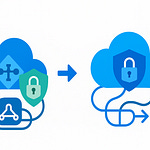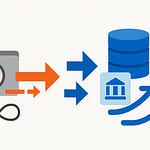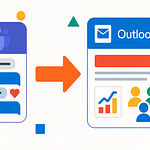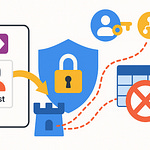If your first instinct when you hear 'Power Platform' is to hit the disable switch in your admin portal, you’re not alone. A lot of IT leaders think that locking it down is the safest move. But here’s the twist: that quick fix usually creates bigger risks—shadow IT, uncontrolled data flows, and compliance blind spots. So why does disabling the platform backfire almost every time, and what should you do instead? Stay with me, because the answer is not as complicated as you think—it just requires thinking differently about governance.
The False Sense of Security
Many admins view shutting off the Power Platform as the fastest route to safety. It feels straightforward: if people can’t build apps, they can’t introduce new risks. At first glance, this looks like strong governance. But here’s the counterintuitive part: the dashboard will look better, yet risk usually increases. Why? Because what you can’t see often becomes the most difficult to manage.
During a Microsoft 365 rollout, the instinct is to clamp down on new tools like Power Platform. The reasoning makes sense—uncertainty is uncomfortable, and you already have SharePoint, Dynamics, and OneDrive. So access gets restricted to test users, emails go out announcing the limits, and leadership believes the issue is resolved. The problem is, business demand doesn’t stop just because IT hit pause.
Employees still need faster reporting, automated approvals, and lightweight apps to streamline repetitive tasks. When official tools are blocked, those needs don’t disappear—they’re just met elsewhere. This is where exposure begins: instead of managed apps inside your tenant, you get unsanctioned spreadsheets, consumer cloud services, or third-party automation patched together without oversight.
Take a common real-world scenario. An organization disables Power Apps after seeing employees begin to experiment with building small tools. The intent is to avoid “shadow apps” before they spread. But within a short time, those same employees start moving data into personal spreadsheets and wiring up free automations through services like Zapier or Airtable. Result: the immediate problem looks contained—licenses show zero usage—but sensitive business data has slipped outside tenant boundaries, with no backup, retention, or DLP controls.
Industry reports and admin experience suggest this pattern is common. When official platforms are blocked, users don’t stop—they pivot. They turn to services like Dropbox, Google Sheets, or personal OneDrive accounts because they can be spun up quickly, with no procurement step. These tools aren’t inherently unsafe, but once financial data, HR records, or customer details end up in them, IT loses visibility. And in regulated sectors, that lack of oversight is more dangerous than the original unmanaged app ever was.
The fallout escalates quietly. A workflow that might have been secured within Dataverse now runs on a spreadsheet saved in a personal cloud folder. A set of customer records that could have benefited from corporate retention policies now lives in an unencrypted file share. What looks like risk reduction is actually just risk relocation—moved into spaces where IT has no hooks to monitor, audit, or respond.
This is the paradox: choosing “disable” feels safe, but without governance it often produces more exposure, not less. You don’t gain real control by locking a door; you simply encourage workarounds through windows you aren’t watching. True control comes from steering activity into secure, supported lanes, not from blocking the road entirely. And the comfort of seeing usage drop on a report can create an illusion of safety that leaves organizations blind to what’s happening outside their view.
That’s the danger of a false sense of security. On paper it looks like risk is gone. In practice, the risks are harder to monitor, the data harder to protect, and the consequences more severe if things go wrong.
And that raises the bigger question—when employees take their business needs into unmanaged places, what kinds of risks are organizations really facing, and why do they matter more than most IT leaders realize?
The Real Risks Lurking Without Governance
When Power Platform access is blocked, business needs don’t disappear—they simply move into places you can’t see. Employees under pressure to deliver results will find a way, and without sanctioned tools, that way often slips outside the reach of IT.
Take a typical example. A finance team wants to speed up invoice approvals. With Power Automate unavailable, someone hacks together a workaround. Maybe invoices are passed through personal email, or an Excel macro gets stitched into the process. It “works,” but none of it follows policy, and none of it is visible to IT.
Or picture a compliance officer tasked with tracking review cycles. Normally, a Power App would provide storage, audit logs, and data retention inside Microsoft 365. Blocked from using that, they turn to a personal Google Sheet. Sensitive notes now sit outside your environment in an unmanaged account. From their perspective, it’s efficient. From an auditor’s perspective, it’s a gap waiting to be flagged.
These are not edge cases; they’re common patterns. When official tools are inaccessible, employees fall back on consumer-grade services—Dropbox, iCloud, free SaaS trials—whatever gets the job done quickly. The intent isn’t malicious. It’s problem-solving under constraint. Multiply this behavior across departments, and you end up with an invisible ecosystem of business-critical workflows scattered across personal accounts.
The real trouble begins with governance breakdowns. Each time data moves into those shadow systems, retention policies are bypassed. Logging and auditing vanish. Security controls like multi-factor authentication and sensitivity labeling are absent. For regulated industries, these gaps aren’t just inconveniences—they’re liabilities. Finance teams risk noncompliance with record-keeping regulations. Healthcare staff risk exposing patient data. Even small missteps, like a recruiter storing candidate details in a private spreadsheet, can quietly create GDPR violations.
Some industry research and vendor telemetry suggest this trend accelerates in organizations that aggressively restrict official tools. The tighter the lock, the more users look for flexible consumer services. Those services are fast, cheap, and readily available, but none of them integrate back into your compliance framework. You can’t apply retention. You can’t enforce conditional access. You can’t even guarantee the account holding the data belongs to your employee six months later.
To ground this, imagine sensitive customer records living in an unmanaged Excel file synced to a free Dropbox folder. To the service, that folder looks identical to a photo backup. There’s no audit trail, no lifecycle management, no security oversight. From IT’s perspective, those records effectively don’t exist—until the day a breach or an audit makes them impossible to ignore.
This is why the risk is deeper than lost efficiency. It cuts into accountability. Regulators won’t accept the defense that a platform was disabled if evidence shows critical data persisted elsewhere. Boards don’t want to hear that missing records are the result of restrictive licensing decisions. And no security team wants to own an incident where sensitive data was exfiltrated from systems they weren’t even aware existed.
Without governance, hidden systems and unmanaged data flows pile up silently. What looks like risk reduction is actually risk relocation into zones where IT has no visibility or control. And here’s the question worth asking yourself: does your organization have any way to detect when business data lands in a personal cloud account?
The uncomfortable truth is that turning the platform off doesn’t shrink the threat. It simply reshapes it into something harder to monitor, harder to contain, and more costly when exposed. Disabling doesn’t erase risk—it pushes it beyond your line of sight.
And that sets up the next misstep many organizations make: assuming that pulling licenses out of the tenant will finally close the gap. On the surface, that feels like control. But the reality is, what looks like removal often leaves more pathways open than most IT leaders expect.
Why 'License Removal' Backfires
License removal feels decisive but doesn’t remove the platform’s integrations; it creates confusion and blind spots. At first, the logic seems sound: no license means no risk. But Power Platform isn’t a bolt-on product—it’s built into Microsoft 365. People still touch pieces of it through Teams, SharePoint, and Outlook, even when licenses get pulled. What looks like closure often leaves users staring at prompts they can’t use, and that friction drives unintended consequences.
On reports, license removal appears neat. Usage drops. Costs shrink. Leadership hears that exposure is under control. But under the surface, the integration points remain scattered throughout Microsoft 365. A button in Teams, a workflow option in SharePoint, or an action in Outlook might still surface. Because the behaviors are integrated, removing a license often doesn’t remove every doorway. From the user side, it feels more like hitting a dead end than having the option cleanly disappear. That’s when frustration sets in—and frustrated employees don’t just drop the need. They route around IT.
Consider a common scenario: a department wants a vacation approval process tied to Outlook calendars. Power Automate would have been the obvious solution. When they discover it’s blocked, the need doesn’t vanish. Someone quickly wires up a free online form that emails requests to a personal account. Soon, the entire team's leave requests run through a service IT doesn’t manage or even know exists. The business problem is solved, but the oversight is gone completely.
That’s the fault line with license removal. Taking away the sanctioned tool doesn’t suppress demand—it shifts it into unmanaged channels. What disappears isn’t risk, but auditing and compliance. Sensitive workflows keep moving forward, just outside the official environment. It’s like stripping guardrails from a road: people still drive, but now the margin for error collapses.
From an administrator’s angle, the trap is that license removal looks like progress when it’s actually theater. Reports show dropped usage, and subscription costs dip, but day-to-day integrations don’t fully detach. Users keep encountering traces of Power Platform woven across the apps they live in. Each encounter is an opportunity for confusion, and each confusion is a trigger for workaround behavior. The real outcome is not reduced usage but fragmented usage—work spread across tools you can’t monitor or secure.
The ripple effect builds fast. Instead of a single managed platform, departments roll out a dozen untracked tools. Different teams end up with their own apps and plugins, none of which are covered by organizational controls. A finance workflow sits in one third-party service, HR approvals in another, and marketing data in a web form no one’s even tested for security. License removal doesn’t stamp out shadow IT; it accelerates it.
This multiplication of unsanctioned tools also reshapes the compliance picture. Every bypass means retention policies get missed, audit logs go dark, and conditional access doesn’t extend where it should. The tighter the lock on official tools, the more creative—and unsupervised—the workarounds become. From a distance, it may look like control has increased, but in reality, risk is spreading across unmanaged apps with no central oversight.
For admins, the takeaway is simple: don’t assume licenses equal governance. They don’t. Removing them tidies up a bill but doesn’t secure your landscape. In fact, it often pushes users toward services you can’t back up, monitor, or take down when something goes wrong. A practical step you can take right now is this: check which Teams or SharePoint actions still display Power Platform prompts after license changes. That list is the start of your remediation backlog.
If license removal doesn’t deliver governance, then what does? The answer isn’t found in cutting access, but in shaping how the platform is managed. And that’s where an underused but powerful option comes into focus—one designed to give you visibility, guardrails, and control without defaulting to a shutdown.
The CoE Starter Kit: A Governance Gamechanger
That brings us to an option many organizations overlook: Microsoft’s Center of Excellence Starter Kit. It isn’t an add‑on you install just for reporting—it’s a governance framework designed to give IT teams visibility into the Power Platform and a way to guide how it’s used. Instead of defaulting to restriction, the CoE Kit makes it possible to monitor activity and apply controls where they matter most.
The CoE Starter Kit is designed to help discover and monitor Power Platform assets—apps, flows, and environments—so admins can see who built what, what connectors are in play, and where those assets live. That means if a marketing team builds a small workflow, IT can understand its scope and decide whether it follows policy. The details are surfaced rather than hidden. And visibility changes the governance conversation: it lets admins classify apps and apply targeted controls instead of relying on blanket restrictions.
For admins who’ve long defaulted to license removal or hard restrictions, the hesitation is understandable. It feels faster to block rather than manage. But while blocking pushes demand underground, the CoE Kit offers a middle ground: structured enablement. IT can allow experimentation, but within guardrails. Guardrails might mean routing users into sanctioned environments or requiring a short training before publishing. The point isn’t to stop activity—it’s to shape it.
One way to think of the CoE Kit is as a nervous system for your tenant. It doesn’t intercept every action up front, but it reports signals back. That way, IT knows what’s happening before something grows too big to control. Instead of discovering a mission‑critical app months later, you see its growth early, while there’s still time to align it to policy. This doesn’t replace governance—it enables governance to operate with intelligence.
In one anonymized deployment we’ve seen, shadow IT spiked as licenses were pulled back, only to settle once the CoE Kit was introduced. The shift wasn’t about new rules—it was about employees feeling guided, not blocked. Apps that might have slipped into unmanaged systems were instead surfaced through the dashboard. IT could enforce secure connectors, retire dormant apps, and ensure workflows handled customer data in approved environments. The result wasn’t explosive growth overnight, but a steady move away from untracked tools and toward sanctioned usage.
Reports from Microsoft and its community highlight the same trend: organizations using the CoE Kit often see compliance improve at the same time adoption grows. That feels counterintuitive but makes sense. When staff see that IT offers a structured space to innovate, they stop looking for workarounds. The equilibrium shifts—from “build elsewhere because IT blocks us” to “build here because IT supports us.” It reduces shadow IT while encouraging innovation under official guardrails.
The value isn’t just in lowered risk. Visibility makes better governance possible. If three departments all build their own expense‑tracking apps, IT can spot the pattern and step in—not to shut things down, but to suggest a shared template. Instead of duplicate or inconsistent tools, you get a common model that reduces support loads and improves compliance. That’s a specific, practical policy action the CoE Kit enables: nudging teams toward safer, more consistent practices.
Ultimately, the CoE Kit reframes the platform. Instead of treating Power Platform as a liability, governed through bans and blocks, it becomes a managed innovation hub. Employees can solve their problems safely, and IT maintains the compliance posture executives expect. The dialogue shifts from “what if something goes wrong?” to “how do we help this succeed securely?” and that realignment may be the biggest win of all.
And once governance visibility is in hand, the next question naturally follows: what’s the best way to structure it so it lasts?
The Three Pillars of Safe Innovation
Effective governance in Power Platform doesn’t come from piling on restrictions—it comes from structured freedom. That framework rests on three simple but critical pillars: visibility, policy, and enablement. Together, they provide the balance needed to let people build solutions safely, without data slipping into places IT can’t reach. Miss one of the three, and governance collapses into partial control that rarely holds up.
The first pillar is visibility. It’s knowing who builds, what runs, which connectors are in use, and where the data ultimately lands. Think of it as your operational radar. With that line of sight, you can spot duplication—like five departments each running their own expense tracker—and decide when to consolidate. Without it, you’re guessing, and every guess forces IT to react instead of guide.
The second pillar is policy. Once you can see activity, policies give it direction through clear boundaries. Practical examples include limiting consumer connectors to sandbox environments while reserving SQL or other business-critical connectors for production environments with extra review. These decisions don’t block the platform outright. Instead, they create lanes: creativity where it’s safe, tighter control where it matters. The strength of policy is that it channels activity rather than cutting it off.
The third pillar is enablement, and this is where many organizations underinvest. Enablement means equipping staff to succeed within the guardrails: running training sessions for makers, offering templates to avoid rework, and establishing a community where builders can share practices and troubleshoot together. Done well, enablement turns governance from an obstacle into a support system. It shows employees they’re trusted to innovate, but also that they’re not on their own when they do.
What makes these pillars work isn’t just their individual value—it’s how they interact. Visibility informs policy by showing what’s actually happening. Policy guides enablement by defining where staff need support. Enablement then boosts compliance by making it easier for employees to stay inside the rules. Together, the three pillars reinforce one another and keep innovation from spilling into unmanaged spaces.
Plenty of organizations prove this point. One company leaned only on strict policy, but with no training or visibility in place, staff gave up on the platform and turned to unsanctioned SaaS apps. Another used visibility and enablement side by side, and adoption not only continued but stayed governed. These outcomes are less about industry or size than about balance. When the pillars are uneven, shadow IT grows. When they align, safe innovation grows.
The lesson is straightforward: governance isn’t about stacking rules higher. It’s about creating a framework where boundaries exist, but so does support. If all three pillars are present, the Power Platform evolves from a question mark in your environment into a managed business tool. If one or more are missing, restrictions backfire, usage fragments, and risk spreads outside IT’s view.
Here’s one way to test your own framework right now. Ask yourself three questions: Can you list all active flows across your tenant? Do you have clear environment-level connector rules in place? And is there a program—formal or informal—to enable makers with training or templates? If any answer is no, that’s the weak spot where risk is most likely to surface.
The reality is that strong governance isn’t heavy or slow—it’s clear, balanced, and sustainable. When visibility, policy, and enablement work together, the Power Platform becomes an asset instead of a liability. And if the instinct is still to cut features or licenses to play it safe, it’s worth reconsidering what that decision actually produces.
Conclusion
Disabling Power Platform doesn’t eliminate risk—it hides it in places you can’t see. Unmanaged data and untracked workflows don’t vanish; they just move outside your governance scope. That’s the real blind spot.
The safer path is governance built on visibility, policy, and enablement. Tools like the CoE Starter Kit can help provide that structure, allowing IT to guide usage instead of chasing shadow IT after the fact. This approach lowers risk while keeping innovation inside the guardrails of your tenant.
Tell us in the comments: have you disabled Power Platform—and what happened after? Subscribe if you want more practical governance deep dives. And one quick step you can take today: run an inventory by exporting a list of environments and active flows. That’s your baseline, and it’s where secure, managed innovation starts.











